#American Encyclopedia of Printing
Text
Milestone Monday



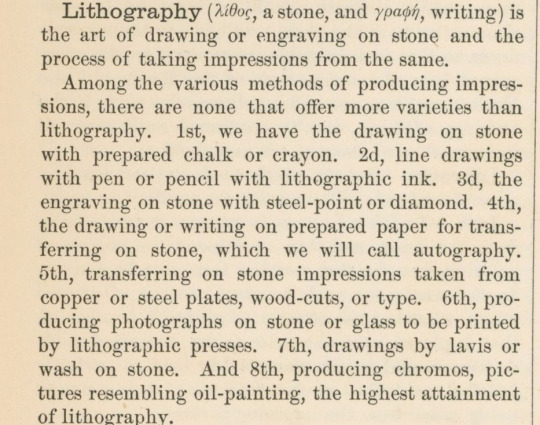

On this day, November 6, 1771, Alois Senefelder (1771-1834) inventor of lithography was born. The son of an actor and tasked with supporting his mother and siblings after his father’s death, Senefelder began his own acting career at age twenty and extended his occupational talents into playwriting. Unable to afford to publish a new play he’d written, Senefelder experimented with what he called “stone printing” in the 1790s, etching acid resistant ink onto limestone and subsequently inventing the first planographic process in printing. Senefelder perfected the chemical process and designed a special printing press with the help of the André family and within five years lithography was being used as a cheap form of creating reproductions by publishers and in mapmaking by land surveying offices throughout Europe.
By the early 1800’s Senefelder and his contemporaries were thinking of ways to introduce color to lithography. Senefelder outlined his ideas on chromolithography in his 1818 book A Complete Course of Lithography, but it was Godefroy Engelmann of France who was awarded the patent for it in 1837.
In celebration of Senefelder’s birthday and all that he contributed to the printing world; we’re looking at the American Encyclopedia of Printing published in 1871 by Menamin & Ringwalt of Philadelphia. Included within the section on lithography is a storied portrait of Senefelder surrounded by his tools and accomplishments. The lithographic portrait was printed by Duval & Hunter, lithographers and chromo publishers out of Philadelphia.
It wasn’t long before artists saw the appeal of lithographs and began taking advantage of the new printing technique. Lithography was far more approachable than other printing methods of the time like engraving, because artists could draw directly on the stone with familiar tools, such as pens and crayons. They did not need to master a new medium or skill to create highly accurate prints with deep textural qualities.
Among the artists of the 1800’s diving into lithography, Honoré-Victorin Daumier (1808-1879) excelled in the medium. Daumier was a prolific French artist who created more than 4,000 lithographs in addition to his many sculptures, paintings, drawings, and wood engravings. His specialty was satirical social caricatures of Parisian life where he effortlessly blended artistry, social commentary, and humor as showcased in the following lithographs held within our collection. The prints were published in 1840 by La maison Aubert of Paris.
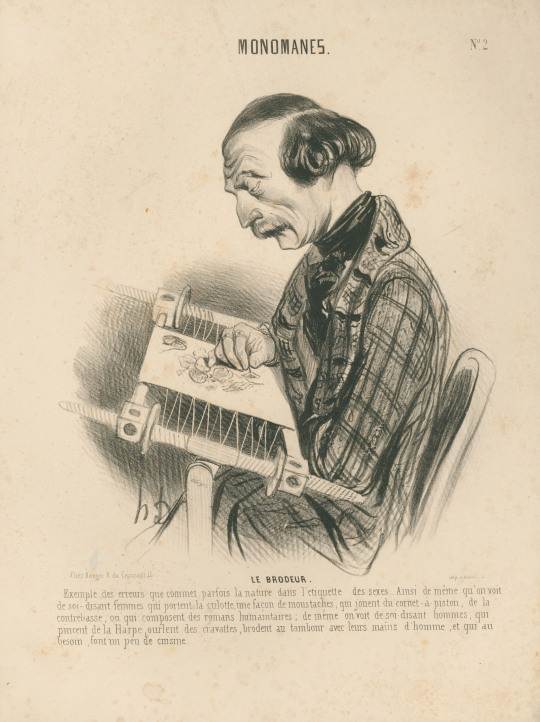

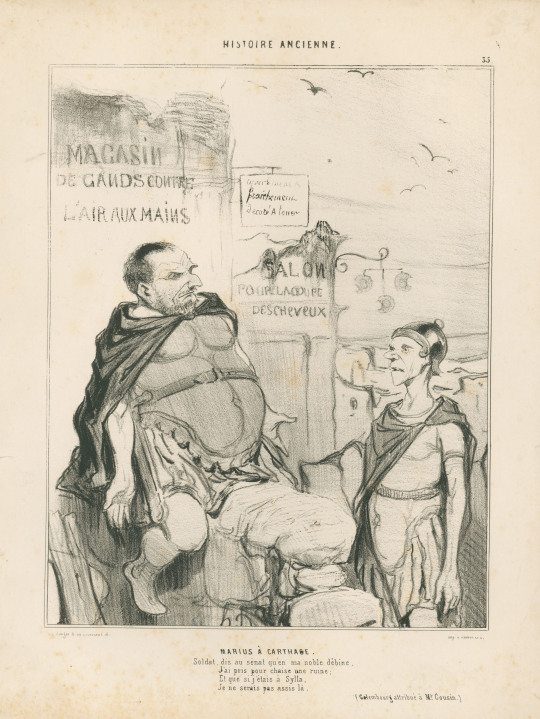
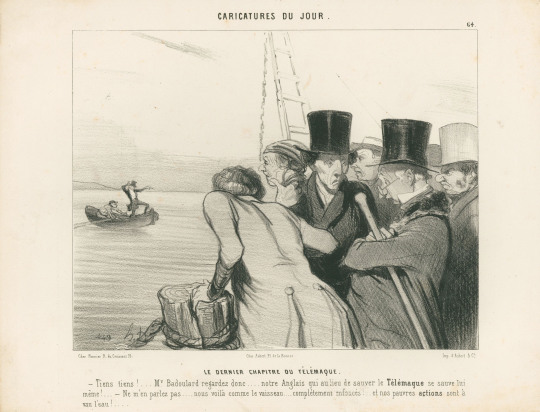

View other posts from the American Encyclopedia of Printing.
View more posts with lithographs.
View more Milestone Monday posts.
– Jenna, Special Collections Graduate Intern
#Milestone Monday#milestones#alois senefelder#lithography#planographic printing#J. Luther Ringwalt#American Encyclopedia of Printing#Menamin & Ringwalt\#Duval & Hunter#Honoré-Victorin Daumier#Daumier#La maison Aubert#lithographs#inventions
18 notes
·
View notes
Text
“patience” - hotch x fem!reader
aaron visits you after a long case and wants you badly
cw: MDNI! implied smut? smut adjacent? Pre established relationship. I dunno I just wanted making out with hotch
1550 words
———————
Why does he look hungry for you? Why does he look like he wants to eat you, literally eat you, like a cannibal? You stand in the doorway of your apartment, staring at him across the threshold. “Hi,” you say after the silence has become unbearable.
“Hi. Sorry,” Aaron snaps out of it, and you watch his tongue jut out to moisten his lips. “Can I come in? I wanted to see you,” he admits.
“Yeah, of course,” you step aside and allow him in, and lock the door behind him. “You know it’s like, super-late, right?” You ask, running your hand over your face. You’re in a matching pajama set that has colorful ice cream cones printed on it and you have your hair wrapped up in one of those heatless curling rods, making the lustful look on Aaron’s face all the more confusing.
“I know, honey, I’m sorry,” he sighs, stepping towards you and pulling you by the wrist. You let him wrap you in his arms. He smells of airplane and that Irish spring-scented soap. “I should have called first. I have a one-track mind when I’m this tired.”
“Where’s Jack?” You ask. You always want to make sure Aaron’s putting his little boy first, and he always does by default. But you never want Aaron to think you want to be prioritized over his son.
“At his aunt’s. I didn’t want to wake him up this late - he’s got a big test tomorrow,” Aaron mumbles as you wrap your arms around his torso and run your nails lightly over his back. Through his suit jacket, he feels thick like an encyclopedia.
“But it was okay to wake me up?” You tease, pulling back to smirk up at him.
“You don’t have a big test tomorrow, do you?” Aaron asks all-knowingly. You shake your head - no, you don’t. Just the same menial job you’ve been at for nearly a year. Aaron kisses your forehead. “That’s what I thought.” He places one hand over your shoulder, and his thumb brushes over your hair. He chuckles softly at the heatless curl rod in your hair, his thumb pressing into it curiously. “And what is this contraption for?” He asks.
“To curl my hair,” you say indignantly. “Beauty doesn’t come easily, you know.”
“Sure it does,” Aaron muses in that far-off voice, and you wonder for a second if your All-American Straight Shooter Poster Boy for Sobriety was high. “You make it look like a cakewalk,” he adds, and you shake your head. Not high, then. Just tired.
“Long case?” You ask, stifling a chuckle as Aaron backs up towards the sofa, tugging you gently with him. He sits down and you follow suit, tucking your feet under your rear and turning to face him.
“Very long,” Aaron grimaces. You run your fingers through his hair - it’s so soft. How is it so soft? He was just in South Dakota for five days straight. When does he find the time for hair care? “I missed you. Can I… can I just touch you, Y/N?” He asks. “Please?”
The fact that you are braless, in a matching pajama set, and have the hair of a carnival performer is not lost on you. He really must have missed you, to want to come over here as soon as the plane lands, to want to see you so badly. How could you possibly say no to such a request?
You nod your head, reaching forward to help him out of his suit jacket. He folds it neatly over the side of the couch, taking his time to purposefully drive you crazy.
Aaron’s smirking subtly as he reaches for your wrists. His index and middle fingers glide up your arm, following your veins torturously, and you move to straddle him against the couch. His hands are on your hips in an instant as your knees press into the couch cushions.
He’s rubbing your lower back as you lean down to kiss him. It’s slow and gentle, as if to ease him back into it after his week out of state. You coax this desperate, thickly-lined sigh out of him, and when you pull back with an arched brow, he’s smiling at you sheepishly. “It was a really, very long case?” He proffers as explanation, and you exhale amusedly through your nose.
“You can just say you missed me,” you suggest.
“I did already.”
“You can just say it again,” you counter, reaching up to cup his face with your hands. He leans into your touch. He blinks those big dark eyes at you a couple times and smiles slowly as you continue speaking. “You can say it until my ego is so inflated that I have to move into a bigger apartment.”
“An ego that big would be a fire hazard,” Aaron jokes. You swipe your thumb across the apple of his cheeks. He leans his head forward and his lips are pressed against your ear. He complies in a low voice that pours out as smooth, expensive whiskey. “I missed you.” He kisses the space just below your earlobe. “I missed you.” He kisses the side of your jaw. “I missed you.”
Your knees wobble as your hips roll forward. Your body is entirely liquid as Aaron pulls his head back and gauges your expression. “Aw, honey,” he teases, squeezing your hips tightly. “You’re blushing.”
You kiss him instead of trying to come up with a quippy response. Any wittiness has oozed out of your brain at this point as your tongue goes rogue, juts out to part Aaron’s lips. He allows you passage and you’re gliding your tongue along his teeth and dancing around his. A needy mewl escapes you and Aaron’s lap goes firm and hard beneath you.
You pull back and see how red his cheeks are. “Who’s blushing now?” You tease, feeling powerful and victorious. Aaron lifts one hand to cradle your face, thumb on your cheekbone. The rest of his fingers are splayed behind your ear and you feel every single one of his nerve endings against yours.
You can’t help yourself.
You’re the cannibal now, as you lean forward and kiss his neck - god, his neck. Your lips are hungry as they trail along his throat, kissing briefly and nipping here and there, and your hands are desperate as they comb through his hair.
He’s sighing, deep and coarse and throaty, and you keep kissing him, wanting to coax out as many of those noises as possible. His hands are everywhere as both your gears kick into overdrive. You’re mapping out his neck and his jaw with your mouth and Aaron’s ginormous hands are sliding freely under the ice cream pajama top. The pads of his fingers make your stomach flutter, and he’s sliding his hands up, up, up to your breasts.
You feel like a teenager going to second base in the back of a car. “Take my shirt off, Aaron,” you whisper, and he gives a low chuckle.
“Yes, ma’am,” his voice is hoarse and amused as his hands slide out from under your shirt to undo the cheap plastic buttons. “I like it when you’re assertive, you know,” he says, and you watch his fingers deftly slide the buttons through the holes.
Your shirt is off and your nipples are instantly reminded that you do not have a bra on. The cold air of the living room hits them and they perk up. Aaron’s staring directly at them like he’s about to interrogate them.
“Hey,” you snap your finger, and his eyes click up to yours. “Eyes up here, buddy.”
“You’re ridiculous,” Aaron laughs tenderly. “You just asked me to take your shirt off. How am I supposed to just not look at them?”
You shrug your shoulders. “I dunno,” you concede. And when Aaron’s hands are sliding up your torso again - so warm and calloused, his hands - you inhale sharply. Anticipation was never something you were good at. His fingers spread away from his thumbs and he’s cupping your breasts. You watch him. He’s like a little kid at an aquarium, awe-struck and sensitized, as he kneads your breasts.
Thumbs swipe over your nipples and your breath catches in your throat. You whimper, and Aaron presses his head forward.
His forehead is flush against your sternum and your arms instinctively loop around his neck as he buries his head into you. You stifle a girlish giggle when his lips kiss your breasts - left, then right - and then he’s sucking on the skin and pulling it between his teeth. You could die right now, you realize, and you’d be blissfully happy.
Your hips roll forward again, on instinct, and your center is so hot and desperate for friction that you reach down for it. Aaron catches your hand before you can even pull at your waistband.
He kisses the inside of your wrist and looks up at you. “I’ll get there,” he promises. Aaron’s dark eyes are lustful and you can tell just by looking at him that this was his plan all along. You don’t mind at all being a source of comfort for him.
“I want you so bad,” you exhale breathily.
“It’s going to be a long night, honey,” he vows. “But you’ll get what you want eventually.”
#basketonthedoorstepofthefbi#criminal minds fic#criminal minds#aaron hotchner x you#aaron hotchner x reader#hotchner x reader#hotch x reader#aaron hotchner imagine#hotch fic#aaron hotchner fic#criminal minds aaron hotchner#Hotchner x you#aaron hotchner fanfic
474 notes
·
View notes
Text
Library Tips For Magic Practitioners
As a Missouri librarian, I've gotten to know my library district pretty well. So here are some tips for you!
Tip 1: Dewey is your friend.
And by that I mean the Dewey Decimal System (a more in-depth list is in that link) is your friend. It breaks down as follows:
000: General Knowledge (encyclopedias, newspapers, almanacs, etc)
100: Psychology & Philosophy (feelings, logic, friendships, etc)
200: Religions & Mythology (Bible stories, Native American myths, classical mythology, etc)
300: Social Sciences & Folklore (families, career, money, government, etc)
400: Languages (English, Spanish, American Sign Language, grammar, etc)
500: Math & Science (arithmetic, animals, rocks, plants, fossils, etc)
600: Medicine & Technology (inventions, machines, farming, health, etc)
700: Arts & Recreation (crafts, painting, music, games, sports, etc)
800: Literature (poetry, plays, novels from other countries, etc)
900: Geography & History (countries, biographies, etc)
If you're looking for ghosts, divination, and witchcraft specifically, look around 133. That's where I've found most of my magic-based books to borrow. You'll also find books talking about people's near-death experiences or reincarnation around this point.
While fiction technically falls in the 800s, most libraries will have it separate from nonfiction. You may still find things like poems or memoirs in the nonfiction section. Some libraries will have the biographies separated into their own section. A few libraries (at least here in Missouri) will have state-specific sections where you can learn more about local stuff.
Tip 2: There are computers and printers to use.
If you can't research something at home for literally any reason, getting a library card will often grant you access to using the computers and printers in the library.
When using the printer, some libraries will charge based on how much ink you use, other libraries will charge based on how much paper you use, and other libraries will charge based on some other criteria.
Be aware that you lose access to these if you reach a certain level of overdue materials or money is charged to your library card until the materials are returned/paid for or the money is paid off. Luckily, librarians are here to help you and can tell you what's missing.
Tip 3: Libraries have more than books.
Seriously. The main branch of my library district has 3D printers, telescopes, gaming systems to use in-building, and more stuff that I didn't even pay attention to because I was scrambling to learn the behind-the-counter stuff. Feel free to ask us for something and we can see if it's in-county for ya!
Audiobooks are often available on CDs and in the form of Playaways, which are like MP3 players with a single book on them. You will need a wire-connected set of earbuds or a wire-connected headset and batteries. Some libraries sell earbuds, but not batteries.
Large Print books will often have their own special designation as LP, but more often they have their own shelf sections. You'll find a surprising number of Westerns there, but there are Large Print nonfiction books.
Tip 4: Requesting materials.
Not finding something you're looking for? Ask the front desk for help! In Missouri, we have the Missouri Evergreen system, which means we can borrow books from all over the state* on the topic you're looking for.
If we can't find it (or you're in a library that doesn't have such a monumental reach), then you can often fill out a book request form. We will then do our best to order the book for you - but be aware that it could take many months, and most of the time, people will cancel their order of the book well before our budget catches up or we even have time to get the book processed and integrated into the system. Patience is key when ordering a new book.
*At participating branches - not every library district in our state is part of Missouri Evergreen.
Tip 5: Self-checkout is a thing.
At least, it is here in Missouri. If you don't want to interact with the front desk, there are often self-checkout stations for books, DVDs, audiobooks, et cetera. Even my middle-of-nowhere branch has one!
Unfortunately, this won't work for other things, like updating your card once it expires or resolving monetary charges (which will both send you to the front desk).
Tip 6: Search the new shelves.
Some libraries like mine will have specially-designated "New Shelves", where you can find a lot of the most recent releases. If you're trying to find something in a particular number that you saw on the search but can't find it, it may be on the new shelf. These get cycled out whenever new books come in, which may mean that you have several months' worth of new releases to dig through.
In short, I hope this helps you in your search through the library! Best of luck to you!
~Jasper
1K notes
·
View notes
Text
Kaiju Week in Review (January 7-13, 2024)
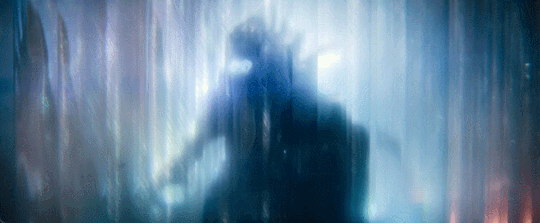
Hard to talk about the Monarch: Legacy of Monsters finale without spoilers, so if you haven't watched it yet, skip ahead to the next item. No flashbacks this time (time dilation aside), just our surviving heroes finally all on the same page to solve a seemingly impossible problem. The momentous reunion between Lee and Keiko got the space it deserved, although I was a touch disappointed that the obvious budding romance between Cate and May got shortchanged. And of course we finally got our first kaiju fight of the series, with Godzilla dispatching the Ion Dragon in a quick but ferocious battle. Fun to see this version of the character take on a low-stakes, low-power challenger for a change. I am routinely frustrated by TV seasons ending on cliffhangers (some of which are then never resolved), but they managed to conclude this season's storyline while setting up the next one, should they have the chance to tell it. Good to have some payoff to the Apex episode earlier in the series. I'm wondering if the series is planning to pivot to Kong now. Since Godzilla: King of the Monsters still hasn't happened yet, the Big G still can't make any public appearances without breaking continuity, which is quite the writing complication.
youtube
@bog-o-bones has blessed us with an excellent feature-length video essay on the history of the kaiju genre. Even for a walking encyclopedia like me, it was fun to have it all laid out so cleanly—the way the three genre pillars of Godzilla, Gamera, and Ultraman rise and fall in popularity, never entirely in sync and consequently keeping us steadily entertained over the decades. So many narratives about the genre in print are decades out of date and/or act like barely anything past the sixties was worth making. This one's up-to-the-minute and gives the seismic influence of films like Cloverfield and Pacific Rim their due. I have my quibbles (last-minute re-records accidentally omitted GAMERA -Rebirth-; the original Mothra deserved more attention), but I acknowledge the amount of works covered here is staggering and every fan would tell this story a little bit differently. Highly recommended.

IDW's biggest Godzilla comic ever is coming in May, a one-shot anthology called Godzilla: 70th Anniversary. It'll have nine stories over 100 pages, with the writers including Joëlle Jones, Michael W. Conrad, Matt Frank, James Stokoe, Adam Gorham, and Dan DiDio. (Some of these folks will presumably be illustrating their comics as well.) The solicitation doesn't offer many plot hints, given that scope: "From the American Old West to modern Tokyo and beyond, this collection features stories of the King of the Monsters fighting with its allies like Mothra, against old enemies like the terrible Mechagodzilla, and reshaping the lives of all who fall in its path!" I'm surprised they're not waiting until November—hopefully it doesn't get delayed into November.
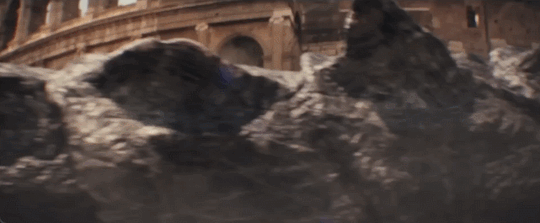
Godzilla x Kong: The New Empire will now release in the U.S. two weeks early—March 29. It's taking the place of Bong Joon-ho's Mickey 17, which is now undated. I can hardly complain about being able to see it earlier, though the move comes with some risk, as it's now opening the week after Ghostbusters: Frozen Empire.

SRS Cinema has opened preorders for their Yuzo the Biggest Battle in Tokyo Blu-ray. Or is it Yuzo: The Biggest Battle on Tokyo? That's what the product page says, but on the cover the title's unchanged. Oh, SRS. Anyway, bonus features are scant: just trailers and something called "A Brief Introduction To Ishii Yoshikazu."
youtube
Here's the teaser trailer for Volcanodon, a short film from Taiwan's Creator Union of Tokusatsu. They're aiming to have it uploaded to YouTube sometime this year, and I'll happily watch it. Obviously low-budget, but it's well-shot and it's nice to see a kaiju movie outside of Japan go all-in on practical effects.
#kaiju week in review#kaiju#godzilla#monarch legacy of monsters#volcanodon#yuzo the biggest battle in tokyo#godzilla x kong the new empire#idw
50 notes
·
View notes
Text

Encyclopedia of American Race Riots [2 volumes]: Greenwood Milestones in African American History [2 volumes] Illustrated Edition
Click the title to download free, and please share it
2008 Ida B. Wells and Cheikh Anta Diop Award for Outstanding Scholarship in Africana Studies
2007 Choice Outstanding Academic Title
Race riots are the most glaring and contemporary displays of the racial strife running through America's history. Mostly urban, mostly outside the South, and mostly white-instigated, the number and violence of race riots increased as blacks migrated out of the rural South and into the North and West's industrialized cities during the early part of the twentieth-century.
Though white / black violence has been the most common form of racial violence, riots involving Asians and Hispanics are also included and examined. Race riots are the most glaring and contemporary displays of the racial strife running through America's history. Mostly urban, mostly outside the South, and mostly white-instigated, the number and violence of race riots increased as blacks migrated out of the rural South and into the North and West's industrialized cities during the early part of the twentieth-century.
While most riots have occurred within the past century, the encyclopedia reaches back to colonial history, giving the encyclopedia an unprecedented historical depth.
Though white on black violence has been the most common form of racial violence, riots involving other racial and ethnic groups, such as Asians and Hispanics, are also included and examined.
Organized A-Z, topics include: notorious riots like the Tulsa Riots of 1921, the Los Angeles Riots of 1965 and 1992; the African-American community's preparedness and responses to this odious form of mass violence; federal responses to rioting; an examination of the underlying causes of rioting; the reactions of prominent figures such as H. Rap Brown and Martin Luther King, Jr to rioting; and much more. Many of the entries describe and analyze particular riots and violent racial incidents, including the following:
Belleville, Illinois, Riot of 1903 Harlem, New York, Riot of 1943 Howard Beach Incident, 1986 Jackson State University Incident, 1970 Los Angeles, California, Riot of 1992 Memphis, Tennessee, Riot of 1866 Red Summer Race Riots of 1919 Southwest Missouri Riots 1894-1906 Texas Southern University Riot of 1967
Entries covering the victims and opponents of race violence, include the following:
Black Soldiers, Lynching of Black Women, Lynching of Diallo, Amadou Hawkins, Yusef King, Rodney Randolph, A. Philip Roosevelt, Eleanor Till, Emmett, Lynching of Turner, Mary, Lynching of Wells-Barnett, Ida B.
Many entries also cover legislation that has addressed racial violence and inequality, as well as groups and organizations that have either fought or promoted racial violence, including the following:
Anti-Lynching League Civil Rights Act of 1957 Economic Opportunity Act of 1964 Ku Klux Klan National Association for the Advancement of Colored People (NAACP) Nation of Islam Vigilante Organizations White League Other entries focus on relevant concepts, trends, themes, and publications.
Besides almost 300 cross-referenced entries, most of which conclude with lists of additional readings, the encyclopedia also offers a timeline of racial violence in the United States, an extensive bibliography of print and electronic resources, a selection of important primary documents, numerous illustrations, and a detailed subject index.
click the title to download - free, and please share it
#Encyclopedia of American Race Riots#American Riots#Black Uprisings#american hate#white supremacy#documents of lynching
12 notes
·
View notes
Text
Okay, used https://ballotpedia.org/Main_Page and https://www.vote411.org to pick my votes for today. Going after work.
You can put in your address and see the races you’ll be voting in, and you can get the biographies of the candidates and see their answers to some questions. Vote411 lets you select your candidates and then you can see the list and print it out to take to the polls with you.
Also there's TurboVote: https://turbovote.org/ This site can help you get registered and find your polling place, and I'm signed up to get reminders of elections that I can vote in.
13 notes
·
View notes
Note
May I ask what reference materials you have at your disposal?
This list includes only books about monsters that I own and have used for the Codex at some point. It does not include books I've gotten from libraries (I have access to an excellent university library and one of the best public library systems in the country), nor does it include RPG books or books about science and nature. We'd be here all day, and this list already took like 90 minutes to collate.
A Field Guide to the Little People—Arrowsmiths and Moore
Barlowe’s Guide to Extraterrestrials; Barlowe’s Guide to Fantasy—Barlowe
The Dictionary of Demons—Belanger
Monsters in Print—Benedict
Ghosts Monsters and Demons of India—Bhairav and Khonna
The Mwindo Epic—Biebuyck and Mateene, ed.
The Beast of Boggy Creek; Momo—Blackburn
Bigfoot: Life and Times of a Legend—Buhs
The Hidden—Christopher and Austin
The Unexplained!—Clark
Ghostland; The Unidentified—Dickey
Prehistoric Monster Mash; Dinosaur Memories II—Debus
After Man; The New Dinosaurs; Man After Man—Dixon
Mysterious Creatures: A Guide to Cryptozoology—Eberhart
Welsh Monsters and Mythical Beasts—Ellis
The Book of Yokai; Pandemonium and Parade—Foster
Encounters With Flying Humanoids—Gerhard
The Leprechaun’s Kingdom—Haining
Meeting With Monsters—Hlioberg and Aegisson
Dragons—Hogarth and Cleary
Monster Atlas Volume 1—Hyland and Kay
The Field Guide to Extraterrestrials—Hyughe
Bestiarium Greenlandica—Kreutzmann
Evil in Our Midst—Jones
The Natural History of Unicorns—Lavers
Legends of the Fire Spirits—Lebling
Travels to the Otherworld and Fantastic Realms—Lecouteaux and Lecouteaux
Cowboys and Saurians 1 and 2—Lemay
Medieval Monsters—Lindquist and Mittman
The Element Encyclopedia of Magical Creatures—Matthews and Matthews
The Night Parade of 100 Demons; The Hour of Meeting Evil Spirits; The Book of the Hakutaku; The Fox’s Wedding—Meyer
Hunting Monsters—Naish
Cryptozoologicon Volume 1—Naish, Koseman and Conway
Encyclopedia of Cryptozoology—Newton
The United States of Cryptids—Ocker
Chasing American Monsters—Ofutt
Iberian Monsters—Prado
The Creatures of Philippine Mythology—Ramos
A Wizard’s Bestiary—Ravenheart
Giants, Monsters and Dragons; Spirits, Faeries, Leprechauns and Goblins—Rose
The Encyclopedia of Monsters—Rovin
Bad UFOs—Schaeffer
JaPandemonium Illustrated—Sekien, translated by Yoda and Alt
Dragons: A Natural History; A Manifestation of Monsters; The Beasts that Hide from Man; Flying Toads and Snakes with Wings; Extraordinary Animals Revisited; Mirabilis; A Menagerie of Marvels; The UneXplained—Shuker
Dangerous Spirits—Smallman
Myths and Legends of the Australian Aboriginies—Smith
Monsters of the Gevaudan—Smith
A Chinese Bestiary—Strassberg
Mummies Cannibals and Vampires—Sugg
The Ashgate Encyclopedia of Literary and Cinematic Monsters—Weinstock, ed.
Mythical Creatures of the USA and Canada—Wyman
The World of Kong—Weta Workshop
Mystery Animals of China—Xu
Appearing on this list does not necessarily constitute a recommendation. Carol Rose's books, for example, has a lot of gaps and are responsible for a number of myths and misconceptions that have circulated around the internet. And A Wizard's Bestiary by Oberon Zell-Ravenheart is more worthwhile as a curiosity than as reference material.
There are a lot of internet sources, of course, but I'm linking my top choices. If you're not already aware of A Book of Creatures and Yokai.com, you need to be.
41 notes
·
View notes
Text

Lucius Henry Holsey was born on July 3, 1842, near Columbus, Georgia. His mother Louisa was enslaved. His father James Holsey owned the plantation. Lucius was born enslaved.
He was sold to his cousin T. L. Wynn and then to Richard Malcolm Johnston, an academic. According to the New Georgia Encyclopedia, Holsey chose to be sold to Johnston. According to American National Biography, Holsey taught himself to read and write and was not educated; according to the New Georgia Encyclopedia, some of Holsey's relatives taught him to read. He remained enslaved by the Johnston family until slavery was abolished.
Holsey converted to Methodism after attending plantation missionary revivals led by Henry McNeal Turner. He was given a preaching license as a Methodist minister in February 1868 and held various positions as a minister until he was appointed a bishop of the Colored Methodist Episcopal Church (now the Christian Methodist Episcopal Church) in March 1873. The Colored Methodist Episcopal Church was a division of the Methodist Episcopal Church, South, created for African people in 1870 during the Reconstruction era.
As a bishop, Holsey founded churches, wrote and revised religious texts including the church's Book of Discipline, and participated in church governance. He also edited a church newspaper, The Gospel Trumpet. He raised funds in support of educational institutions including Paine College; Lane College; Holsey Industrial Institute in Cordele, Georgia; and the Helen B. Cobb Institute for Girls in Barnesville, Georgia.
Initially an advocate for racial cooperation, Holsey endorsed Black separatism around the turn of the 20th century after Sam Hose was lynched in 1899.
In 1898, Holsey published Autobiography, Sermons, Addresses, and Essays with Franklin Printing & Publishing Company in Atlanta, Georgia. It went through three editions.
Holsey married Harriett Turner on November 8, 1862, or 1863. Harriett was 15 at the time. Her name is also given as Harriett A. Pearce or Harriet A. Turner. Harriett and Lucius met in Hancock County, Georgia, while classes at the University of Georgia, where Johnston taught, were canceled due to the Civil War. Lucius died on August 3, 1920, at his home on Auburn Avenue in Atlanta
#african#afrakan#kemetic dreams#africans#afrakans#brownskin#brown skin#auburn avenue#harriett turner#hancock county#columbus ga#columbus#Lucius Henry Holsey
16 notes
·
View notes
Text
The Reason Why Americans Spell "Colour" As "Color" (And Other Weird Spellings)
For American and British fanfic writers/readers alike (or any curious souls from anywhere else) who are wondering why Americans spell certain words without an extra "U", unlike everyone else, you can thank the printing press and the classic, American tradition of "cutting corners" for that.
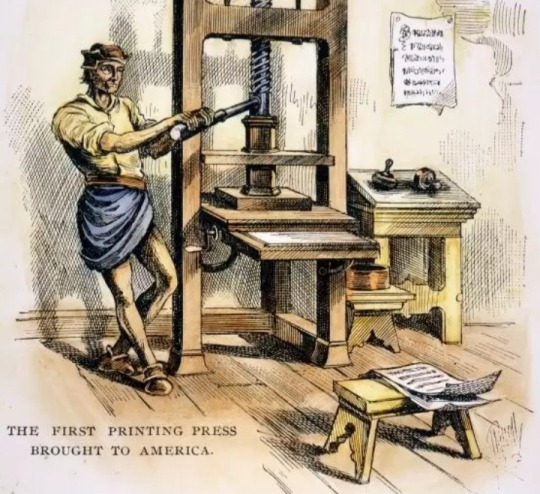
The printing press was the first machine to mass produce documents, entire books, and newspapers, when the only other alternative was writing everything out by hand, and was crucial in developing a nation that was just starting out. However, buying/transporting the machines and metal letters could be pricey and would take far too long to get to America (since all supplies had to be shipped overseas from Europe). News outlets of the time didn't want to potentially miss out on printing vital, current events during this wait and newspapers also only had so much room to get their point across on the front page. So, it became common practice to get rid of letters that didn't affect words phonetically to save on space, money, and time, drastically changing how Americans spell certain words to this day.
Words like "favourite", "flavour", "colour", "armour", and "honour" became "favorite", "flavor", "color", "armor", and "honor". We also have:
Mould➡️Mold
Encyclopaedia➡️Encyclopedia
Speciality➡️Specialty
Jewellery➡️Jewelry
Cheque➡️Check
Plough➡️Plow
Draught➡️Draft
Programme➡️Program
Spelling things phonetically also advanced the country's education, as most of the illiterate lower-class could now pick up reading a lot faster, thus, essentially, creating a middle class, where there hadn't been one before, as the written word became more accessible. This history of choosing spellings based on phonetics eventually made America into a culture that spells many words by how they sound when spoken, instead of by their root-word origins (such as Latin, Roman, Greek, etc.) even if the letter count is the same or longer.
Examples include "realise" becoming "realize", "cosy" becoming "cozy", and "offence" and "defence" becoming "offense" and "defense".
And thus concludes the deep and rich history behind why Americans spell certain things the way that they do.
So, just a tip for you British fanfic writers out there planning to write in an American fandom:
Make sure to check your spelling.
(Oh, quick side note: some Google results will say that Americans use "dialog", "monolog", and "practise" instead of "dialogue", "monologue", and "practice", but I have never once come across anyone in my life who has ever used those spellings, nor have I used an American computer/phone that will let me do that without autocorrecting me. Maybe there are some places in the US that use those, but if there are, I haven't seen them.)
#fanfic#fanfiction#authors#Writing#Literature#History#britpicking#Yank-alyst#british english#American english#The printing press#The more you know#teen wolf#the marvel cinematic universe#MCU#Supernatural#911 fox#captain america#percy jackon and the olympians#stranger things#it stephen king#DCEU#AO3
91 notes
·
View notes
Photo
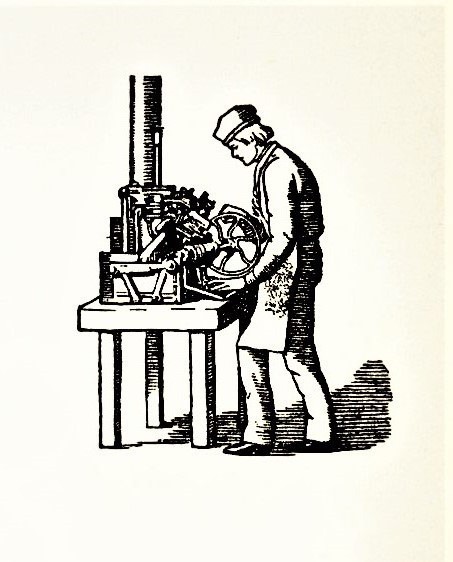



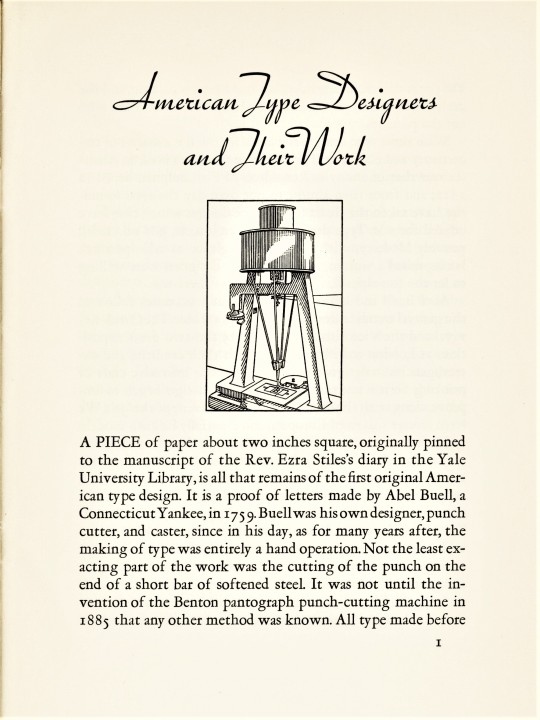
Typography Tuesday
A new addition to our collection is American Type Designers and Their Work, a brief catalog for an exhibition held at the Lakeside Press Galleries of the R. R. Donnelley & Sons Company in Chicago, Illinois, 1947-1948.There are no type samples presented in the catalog, but it lists 48 American type designers who today are luminaries in the American type design constellation.
The catalog was designed by Carl Purington Rollins, the master printer to Yale University from 1920 to 1948. The text is set in Monotype Garamont, designed by Frederic Goudy in 1923, with Trafton Script, designed by Howard Trafton for Bauer Type Foundry in 1933. The illustration of the 19th-century type caster was redrawn form a wood engraving in J. Luther Ringwalt’s American Encyclopedia of Printing, Philadelphia, 1871. The simplified illustration of a matrix-cutting pantograph routing machine was supplied by Limited Editions Club and Heritage Press founder George Macy.
Rollins acknowledges the influence of the English Arts & Crafts movement on early 20th-century American type designers and notes that “With the invention of the pantograph punch cutter [invented by Linn Boyd Benton, the father of Milwaukee-born Morris Fuller Benton, the most prolific type designer of the 20th century] type design became an ‘art’ rather than a craft, and as might be expected the personality of the designer became for various reasons more important.” He continues,
Good types have character and power that we neglect at our peril.. . . A faulty choice can pull against the message and the purpose, even as the veriest jackass. A sound and happy choice can lend wings to words. . . .
Rollins follows this with an admonition from the great American type historian, printer, and founder of the Merrymount Press Daniel B. Updike:
If we do not judge types rightly, they will judge us -- the penalty of foolish choice being the penalty we pay for choosing foolishly in life. We are punished by getting what we want!
View more Typography Tuesday posts.
#Typography Tuesday#typetuesday#Typography Tuesday#Carl Purington Rollins#American Type Designers and Their Work#Monotype Garamont#Frederic Goudy#Trafton Script#Howard Trafton#Lakeside Press#R. R. Donnelley#exhibitions#type design#type designers#type exhibitions#Daniel B. Updike#type casters#pantograph#pantograph router#Linn Boyd Benton#Morris Fuller Benton
20 notes
·
View notes
Text
American Gods’ incomplete bibliography (4)
And here we reach the last of Neil Gaiman’s proposed bibliography for American Gods!
10) Books about American folklore

A Treasury of American Folklore
Neil Gaiman describes it as a “wonderful collection of extracts, jokes, songs, essays and tales”, and points out that most of the quotes used in the chapter headings of American Gods come from this book.
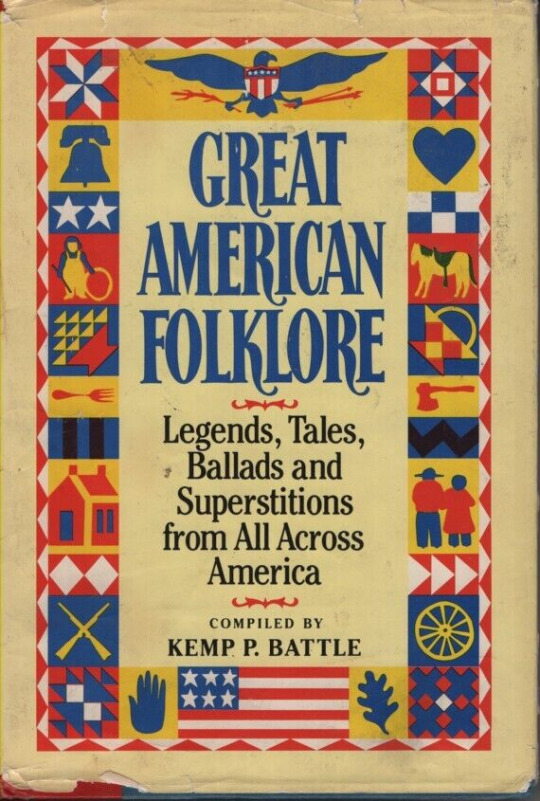
Great American Folklore
Neil Gaiman only has to say that it is a “readable” book, though he also adds that he actually didn’t use anything from it for “American Gods”.

Myths, Legends and Folktales of America: An Anthology
Neil Gaiman points out that this book was heavily inspired by and basically borrows a lot of “A Treasury of American Folklore” - but despite this, the book actually adds a lot of new and good stuff in here (Gaiman notably remembers the “lyrics to Greg Brown’s ‘Jesus and Elvis’).
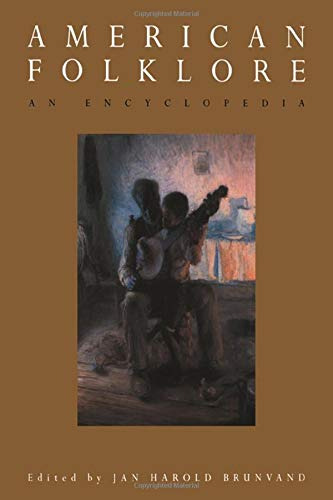
American Folklore: An Encyclopedia
Neil Gaiman loved this book, because he is “a sucker for encyclopedias” and it is an excellent one. His only regret was that it was only published as he had written half of American Gods already, and so he couldn’t use it for half of the novel.
11) Additional mythology books
[Could not find the cover of the book]
Gods and Goddesses of India, by Anjula Bedi, Eeshwar, 1998
In Neil Gaiman’s own words: “Some potted bios of Indian gods, along with nice pictures printed on translucent paper”.
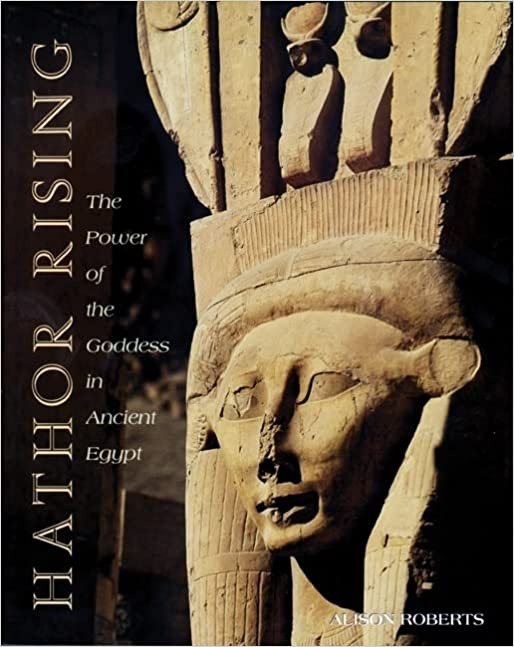
Hathor Rising: The Power of the Goddess in Ancient Egypt
Neil Gaiman only used this one because he wanted an “Egyptian book with plenty of photographs and illustrations, and this one was the nearest to hand”.
#neil gaiman speaks#american gods#bibliography#american folklore#neil gaiman#references#books#mythology#american gods bibliography
23 notes
·
View notes
Text
A Post-Internet World
I was watching The X-Files earlier. Season 1, which aired in 1993. It’s a fun show; and as a 90s boy (me being born in 1992), it took me back to that hazy world, where the music was different, the haircuts different, even the colour of the streets seemingly different.
The characters step into phone booths to make calls. They still have those televisions which are massive black boxes which flash with those black & white dots when not hooked on to a channel. They still read broadsheet newspapers. I’ll admit a nostalgia for the 1990s and TV shows from that pre-Sopranos age.
But it got me thinking about the main thing missing from the daily lives of people back then.
The internet. They don’t use the internet; it’s just not there … Which is surreal when you compare it to 2023, when all of us are constantly wired to the internet.
So it got me thinking about just how much the world wide web has altered the planet, since the era I mentioned above, when I was a child.
1993 is a convenient year, because this is when the first proper web browser was released to the public. Amazon and eBay were invented in 1995, and Google in 1998. Wikipedia was born in 2001. In 1993, 1% of information fed through global telecommunications networks was performed via the internet. In 2023, it is 100%.
What about TV shows? Well – you remember Blockbuster, right? The video store. That’s what you’d do on a Friday night, go and rent a VHS out to watch the X-Files. Well, Blockbuster declined heavily after the explosion of the internet, and closed its last store in Alaska in 2018.
The internet also killed Toys R Us, RadioShack, Virgin Megastores (in terms of high street shops, in the West), the Discovery Channel Store, Borders book shop, Hastings Entertainment, Dixons entertainment, Woolworths, Sears (which was once the world’s largest retailer) and GameStop, to name a few.
Furthermore, there are whole industries which have had to adapt to the WWW. Pre-internet, and up until the new millennium, almost all books were sold in bookstores, as physical copies. Today, 80% of books are sold online. Specific types of books are no longer bought on demand; such as encyclopedias, dictionaries, travel guides or maps – all of which are easier to access online.
Landlines … for your phone in your house. In the 1990s 9 in 10 of households used their landline phone as a main way of communication. Today it’s 9 in 10 with cellphones.
Journalism. From 2005 to 2021, over 2200 American print newspapers closed in the US; and from 2008 to 2020, the number of American newspaper journalists were cut by half. Similarly, in the UK, around 300 newspapers died away between 2009 and 2019.
The music industry. Is an obvious one, and among those most severely struck. Whilst the net made it far easier to pirate music, platforms such as Apple Music and Spotify removed the need for illegal listeners. The industry itself was among the most profitable in the 1990s. Within the last 20 years its revenue has been reduced by 50%, when taking all sources into account. CD sales reached their peak in the year 2000 in America (a figure of around 900 million). Since then sales have dropped 95%.
And, on a grander scale, we can’t ignore how the internet has altered how we socialise. We spend more time on the internet in our daily lives that we do via communicating with other people face to face.
It’s changed the way we read, and the amount that we read. People are far more likely to skim read articles on a screen and not read beyond the initial three or four paragraphs, especially if this requires clicking ‘next page’ to read on. Writers on the internet now write shorter sentences in order to hold reader attention span.
The internet has changed crime. Through cybercrime, as people find it easier to steal money from long distance locations whilst hiding their identities. It is estimated that over $600 billion is lost (or robbed) each year via cyber criminals.
It’s changed the way people date. People who use dating apps are more likely to have sex sooner in a relationship than those who meet in the ‘traditional’ way; and are more likely to date several people at once before choosing a specific individual. Moreover, it has made people less likely to commit, because with internet dating, they have far more options.
Most of this essay has been negative. One can’t deny that the internet has many positive sides to it too. With Healthcare, for instance: as people are able to communicate with their doctors without having to physically attend a GP, thus making it faster. And in terms of education – one can basically look up any information they please at any point. Rather than having to head to a library or school.
I use the internet all the time as well. Am no different. I suppose it just felt odd, watching the X-Files earlier, as it gave me that dose of what it was like in boyhood. There was Twin Peaks, as well, and Friends, you know, all of those classic 90s shows. I used to watch them on one of those gigantic televisions, which only had four channels.
In 1993, around 15 million people used the internet. Nowadays, over 4.66 billion people are online. That’s less than 1% of the world population in 93, to around 60% of the world population now.
I miss the 1990s. It was a great decade for things like television, and film, and music. Culture in general. The irony is that I no longer own a VHS player. And I was using a streaming site to watch the X-Files earlier. I should feel lucky to have experienced that last-decade-before-the-internet. To belong to the millennials generation.
What I do still have is a retro TV (with the black & white scrambly dots), and a Nintendo 64 and Playstation, oh – and a great collection of CDs. And they’re never getting chucked out, ever. Will keep them, always.
#writeblr#essays#history of the internet#history of communications#x files#1990s tv#classic tv#blockbuster#how the internet has changed the world#history of culture#cinema#journalism#music industry
6 notes
·
View notes
Text
Collected Writings Of: John Henrik Clarke - FREE Download on Z-Library

John Henrik Clarke papers 1937-1996
Consisting mainly of correspondence, lecture notes, course outlines, writings, research material, organizational records and printed matter, the John Henrik Clarke papers are a unique archive for the study and interpretation of African and African-American history during the second half of the 20th century. As a sergeant-major in a segregated unit in Kelly Field, Texas, during World War II, Clarke helped train African-American enlisted men for mess and other maintenance duties. The collection partially records the lives of these men, changes in their personal and military status, and disciplinary procedures against them.
Biographical/historical information
Born in 1915, the oldest son of an Alabama sharecropper family, John Henrik Clarke was a self-trained historian who edited and wrote over thirty books, and was a leading figure in the development of African heritage and black studies programs nationwide.
He was a co-founder of the Harlem Quarterly (1949-1951) and an associate editor of the journal Freedomways. During the 1960s, he served as director of the African Heritage unit of the anti-poverty program Harlem Youth Opportunities Unlimited (HARYOU-ACT), and as special consultant and coordinator of the Columbia University-WCBS television series "Black Heritage."
He joined the Department of Black and Puerto-Rican Studies at Hunter College in 1969. The founding president of the African Heritage Studies Association, he was a consultant to many projects, including the Metropolitan Museum of Art's exhibition "Harlem On My Mind" and the Portal Press Springboards series, "The Negro in American History." He was awarded the Phelps-Stokes Fund's Aggrey Medal in 1994 for his role "as a public philosopher and relentless critic of injustice and inequality." John Henrik Clarke died in 1998.
Scope and arrangement
Consisting mainly of correspondence, lecture notes, course outlines, writings, research material, organizational records and printed matter, the John Henrik Clarke papers are a unique archive for the study and interpretation of African and African-American history during the second half of the 20th century. As a sergeant-major in a segregated unit in Kelly Field, Texas, during World War II, Clarke helped train African-American enlisted men for mess and other maintenance duties.
The collection partially records the lives of these men, changes in their personal and military status, and disciplinary procedures against them.|||The author's voluminous correspondence is both personal and professional. Significant correspondents include Julian Mayfield, J.C. de Graft-Johnson, Adelaide Cromwell, Basil Davidson, Cheikh Anta Diop, Hoyt Fuller, Richard B. Moore, John G. Jackson, Ezekiel Mphahlele, Alice Walker, Elliott Skinner, E.U. Essien-Udom, Robert E. Lee, Calvin and Eleanor Sinnette, Alioune Diop and the editors of Presence Africaine, and L.H. Ofosu-Appiah of the Encyclopedia Africana project.
The bulk of the correspondence is arranged chronologically.|||Curriculum material in the collection ranges from African history outlines developed in the 1960s for the HARYOU-ACT Heritage program and the Timbuctoo Learning Center, to core black studies courses at Hunter College, Cornell University, the New School for Social Research and Rider College in New Jersey.
The lecture notes (1954-1979) are supplemented by conference material and other printed matter. The HARYOU-ACT series consists of academic and administrative files of the Heritage program, which was administered by the Community Action Institute, HARYOU's central training and orientation department.|||
The Editing and publishing series consists of correspondence, manuscripts, reviews, research material and printed matter for the following books and publishing projects: "Malcolm X, the Man and His Times," "William Styron's Nat Turner: Ten Black Writers Respond," "The Black Revolution, USA," "Anthology of American Negro Short Stories," "Harlem, USA," "Marcus Garvey and the Vision of Africa," the Columbia University-WCBS-TV series "Black Heritage," and the magazine Freedomways. The Garvey files include substantive correspondence with Amy Jacques Garvey.
The Freedomways material relates in part to special issues edited by Clarke on Harlem, the Caribbean and the life of W.E.B. DuBois. Unfinished projects range from "A Treasury of American Negro Humor" (1957) to "Tales of Harlem" (1969) and a life of Patrice Lumumba. Clarke's own writings in this collection consist of early drafts of "Africa Without Tears," a book of travel writing; "Journey to the Fair," an early novel of hobo life; a compilation of short stories, and several files of articles and essays.
The bulk of the author's writings are part of a posthumous addition to the collection.|||The main organizations represented in the collection are the African Heritage Studies Association, founded in 1968 when black scholars walked out of the African Studies Association and the Universal Ethiopian Student Association, a Harlem-based nationalist group opposed to the 1930s Italian invasion of Ethiopia. Other files relate to the African Heritage Exposition of 1959, the American Society for African Culture, 1959-1963, the Fair Play for Cuba Committee, 1960, the Afro-American Scholars Council, 1972-1979, and the Schomburg Center for Research in Black Culture, 1970-1990.
Also included are correspondence and writings by Shaleak ben Yehuda of the Original Hebrew Israelite Nation of Jerusalem, a community of African-American Jews facing deportation from Israel in the 1970s, and correspondence and publications related to Jacob Carruthers and his Association for the Study of Classical African Civilizations.|||
The collection is also the site of a number of outstanding unpublished manuscripts by authors like Yosef Ben-Yochannan, Frank Chapman, Jr., Lionel Hutchinson, Edward S. Lewis, Charles Seifert and John G. Jackson.
There are also transcripts and other material from various African and Caribbean conferences. Also included are consultancy files for the exhibition "Harlem On My Mind," the Carver Federal Savings bank, and printed matter on Kwame Nkrumah, black nationalism, the 1978 Jonestown massacre in Guyana, as well as other subjects.
The John Henrik Clarke papers are arranged in fourteen series:
Personal Papers
World War II
Correspondence
Lecture Notes
Course Outlines
HARYOU-ACT
Editing and Publishing
Writings
Organizations
Consultancy
Subject Files
Other Authors
Oversized Documents
Restricted File
Administrative information
Source of acquisition
Gift, Dr. John Henrik Clarke, 10/1994 and 1999.
12 notes
·
View notes
Text

My Favorite Books of 2023
I had very few 5-star books this year, but quite a few 4.5-star and 4-star books. I limited this list to books I read for the first time this year (with one exception—an audiobook which I had read in print, over 10 years ago.) I also decided not to base the list entirely on the number of stars I gave each book at the time I read it. Instead, the books on this list are the ones that shine brightest in my memory at the end of the year.
Spinning Silver (Naomi Novik) – 5 stars. Probably the best book I read all year. Not only did I love it, I was also blown away by her mastery of the writing craft.
Emily Wilde’s Encyclopedia of Faeries (Heather Fawcett; ARC) – 5 stars. Absolutely delightful! Emily Wilde is a grumpy academic who is brilliant at research but terrible with people. When she travels to a remote Scandinavian island to research the local fae, she is drawn in to the townspeople’s lives and troubles, as well as the machinations of the fae. And her charismatic and interfering colleague, Wendell Bambleby, is a complication she neither wants nor needs. Or does she? (reviewed here)
Without a Summer (Mary Robinette Kowal) – 4.5 stars. Third in a historical-fantasy series, and possibly the best yet. Kowal’s magic system (“glamour”) is unique and fascinating, and her use of actual historical events and trends is meticulously researched, but it’s the relationships, particularly between plain Jane and her handsome, highborn husband, that really make the book shine.
An Enchantment of Ravens (Margaret Rogerson) – 4.5 stars (though I may raise it to 5) Enchanting. The Fae are properly fae (unpredictable, tricky, and largely indifferent to human emotions), yet the author made the love story totally convincing.
Identity (Nora Roberts; ARC) – 4.5 stars. Well-written contemporary romantic suspense, but simultaneously a character-driven novel about a woman rebuilding her life after her best friend was murdered and her own identity stolen by a serial killer. All the characters are compelling, and there are strong family relationships on both the hero’s and heroine’s side.
Murder on Black Swan Lane (Andrea Penrose) – 4.5 stars. A strong start to a historical mystery series that became a highlight of my reading year. The Wrexford and Sloane mysteries are set during the Regency era, mostly in London, and involve both high society and the middle and lower classes. There’s a long, slow-burn romantic arc, strong friendships, and found family. I absolutely love them. I’m letting book #1 stand in for the entire series, though book #2 might actually be my favorite by a hair.
The Curse of Penryth Hall (Jess Armstrong; ARC) – 4.5 stars. I would have given this marvelous gothic mystery 5 stars, were it not for the frequent sentence fragments that sometimes threw me out of the story.
Role Playing (Cathy Yardley) – 4.5 stars. I was surprised by how much I enjoyed this grumpy-sunshine romance between 50-ish online gamers. The author’s portrayal of both the bi demi hero and the Asian-American single mom heroine is sensitive and perceptive, and the ending is pure satisfaction.
Bound for Perdition (Celia Lake) – 4 stars. Celia Lake‘s historical-fantasy romances are my latest obsession (since 2022). She published 5 (!) novels or novellas in 2023, and Bound for Perdition was my favorite of this year’s releases that can stand on its own. (I should probably add that I reread her entire Albion oeuvre once this year, and reread about 2/3 of the books twice. Something about her characters, setting, and style really appeals to me.)
Hounded (Kevin Hearne; audiobook) – 5 stars. This is the exception to the “new-to-me” books. I read Hounded in paperback about 11 years ago, but listening to it on audiobook was a different and better experience. And as with Andrea Penrose’s mysteries, I’m letting the first audiobook stand in for the rest of the series. (Well, most of them. I’m not quite to the end of the series yet, and book #3 really irritated me, but other than that, I loved them.) (reviewed here)
I am embarrassed at how few of these I actually reviewed. I’ll try to do better in 2024!
2 notes
·
View notes
Text
I remembered to send in my absentee ballot request today. You should print yours out and put it in the mail today too fellow Americans, of the US variety.
Ohio - https://www.ohiosos.gov/elections/voters/absentee-ballot/
All you other states.
2 notes
·
View notes
Text
Wk11-Postmodernism
In this class, I was able to learn about the proper concepts of postmodernism.
Postmodernism generally refers to a general movement in Western society, culture, and art that seeks to escape from modernism and is a method of creating works. It was impressive that a lot of methods that deviate from modernism, such as factory-printed methods or fragmentation, were used.
The artist who struck me as a representative artist of postmodernism was Andy Warhol.

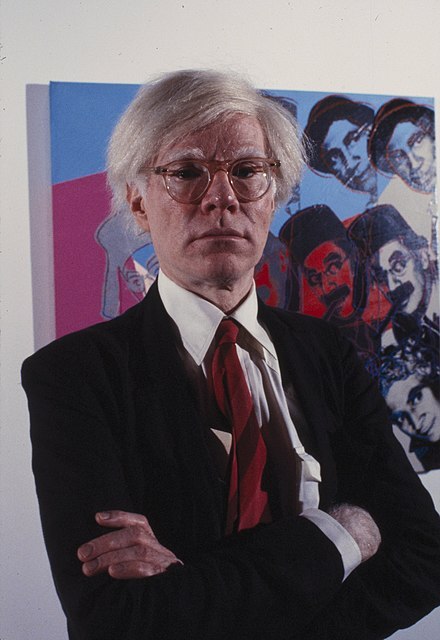
Warhol’s world of work is mostly related to ‘American material culture.’ He painted money, dollar signs, food, knick-knacks, shoes, celebrities, and newspaper clippings. To him, these topics represented the values of American culture. For example, “Coca-Cola is always Coca-Cola.

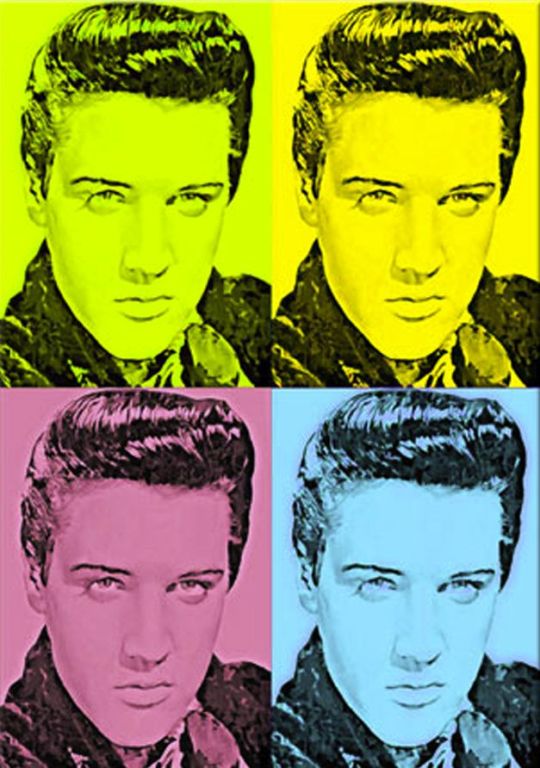
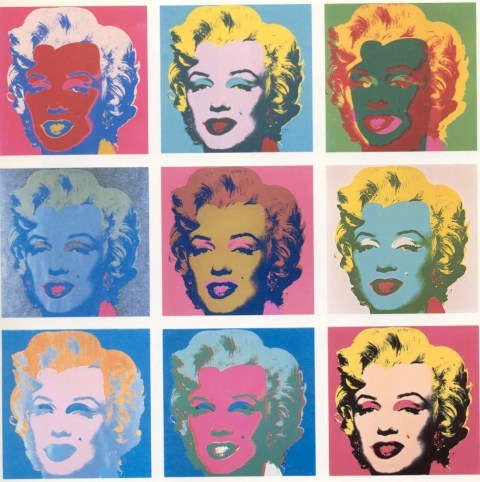
Unlike classical art and modernism, the design gained popularity as a clear pop art and commercial painting that embodies the rich American society.
During class activity, we did an activity to make a poster about post-modernism, we selected Red Wing, the brand of shoes that my friend was wearing, and made the poster. To promote Red Wing shoes more effectively, I looked for several references and referenced the feel of Dr. Martens’ poster and photos of the shoes from various angles.
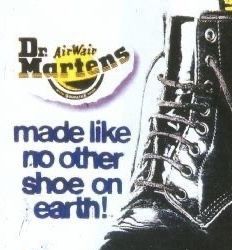
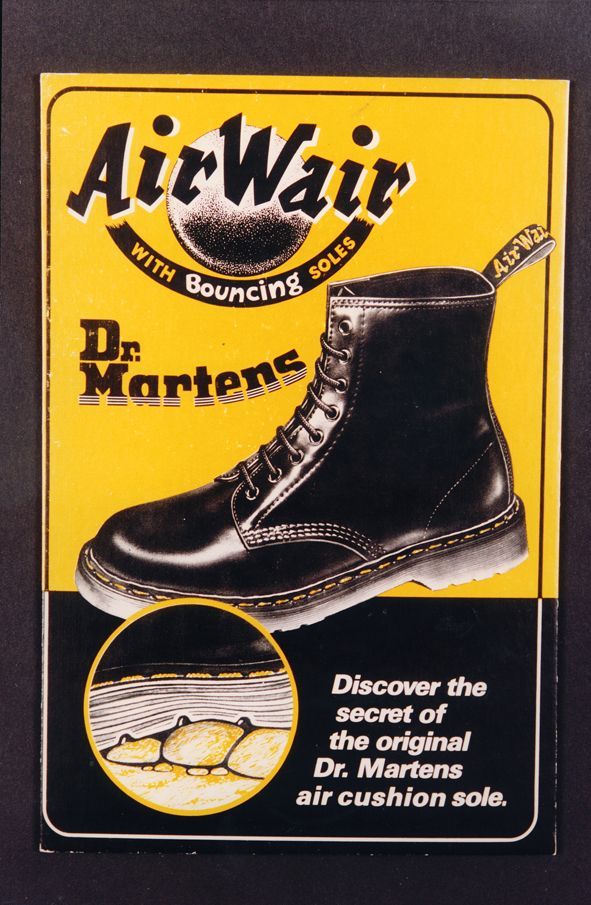


When referring to keywords of postmodernism, we thought fragmentation is another key aspect of postmodernism, reflecting the fractured nature of contemporary society and the erosion of traditional structures and hierarchies. Therefore, we applied fragmentation to give the poster itself a more postmodern feel.

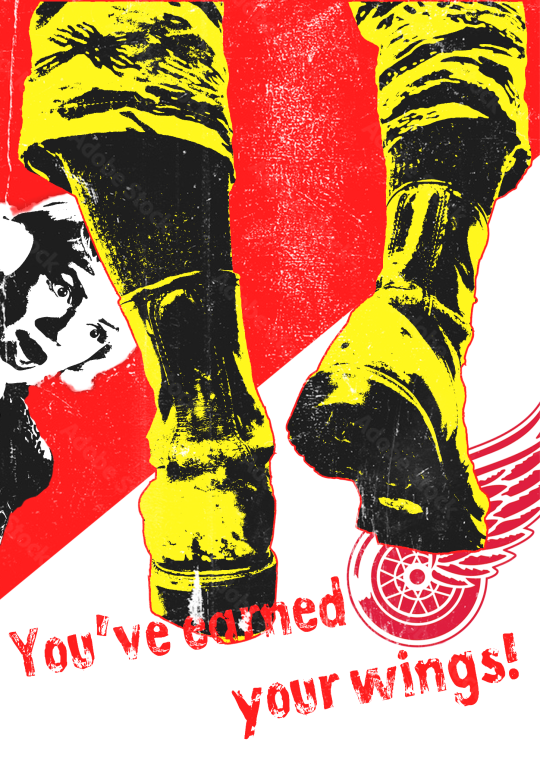
Lastly, through this activity, I felt that I should look at more works by artists who pioneered the postmodern era and try to become someone who creates works without being bound by a mold.
(271 words)
“Andy Warhol.” Wikipedia, the Free Encyclopedia, 4 Apr. 2024, https://en.wikipedia.org/wiki/Andy_Warhol.
“팝아트의 두거장 앤디워홀 & 로이 리히텐슈타인.” Naver Blog, Studio Bob, 30 May 2013, https://m.blog.naver.com/gaziclub/10169385017.
1 note
·
View note